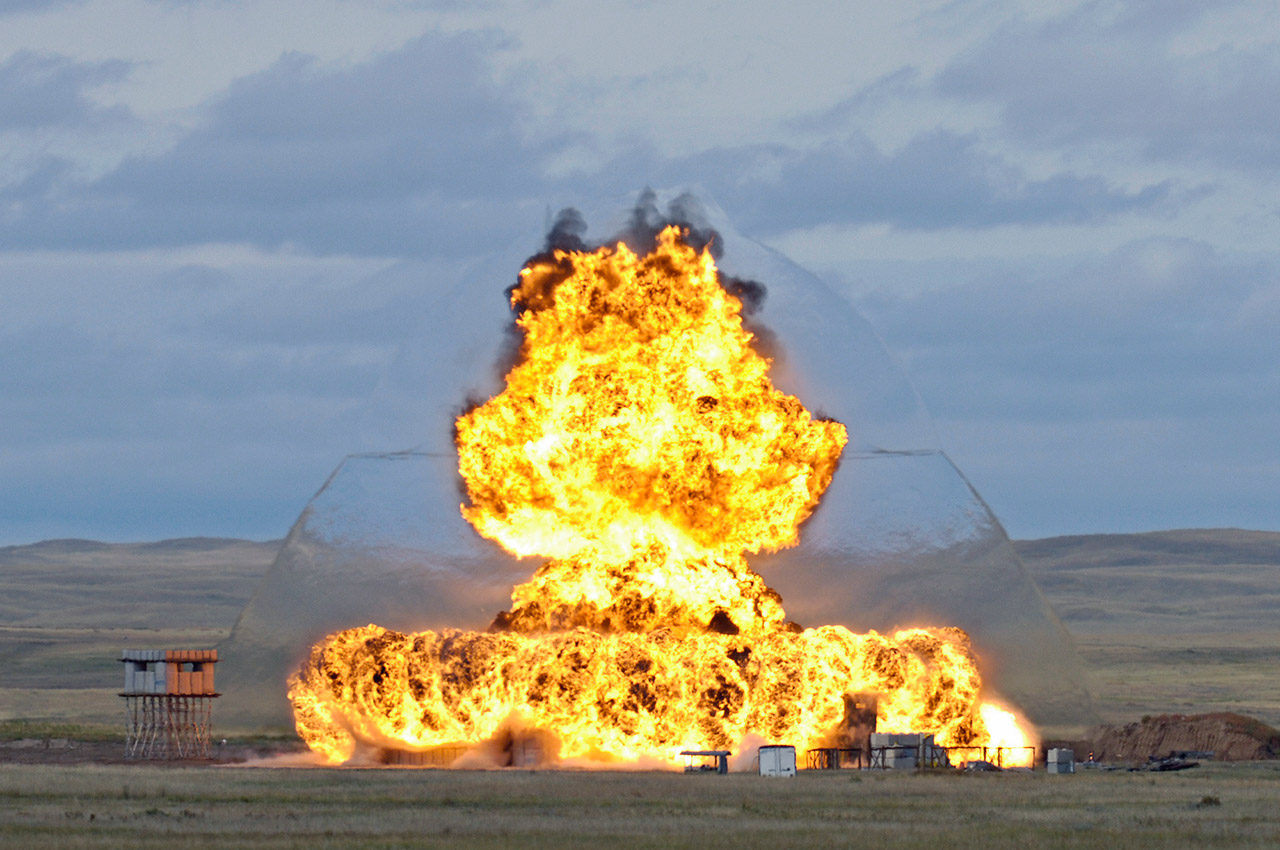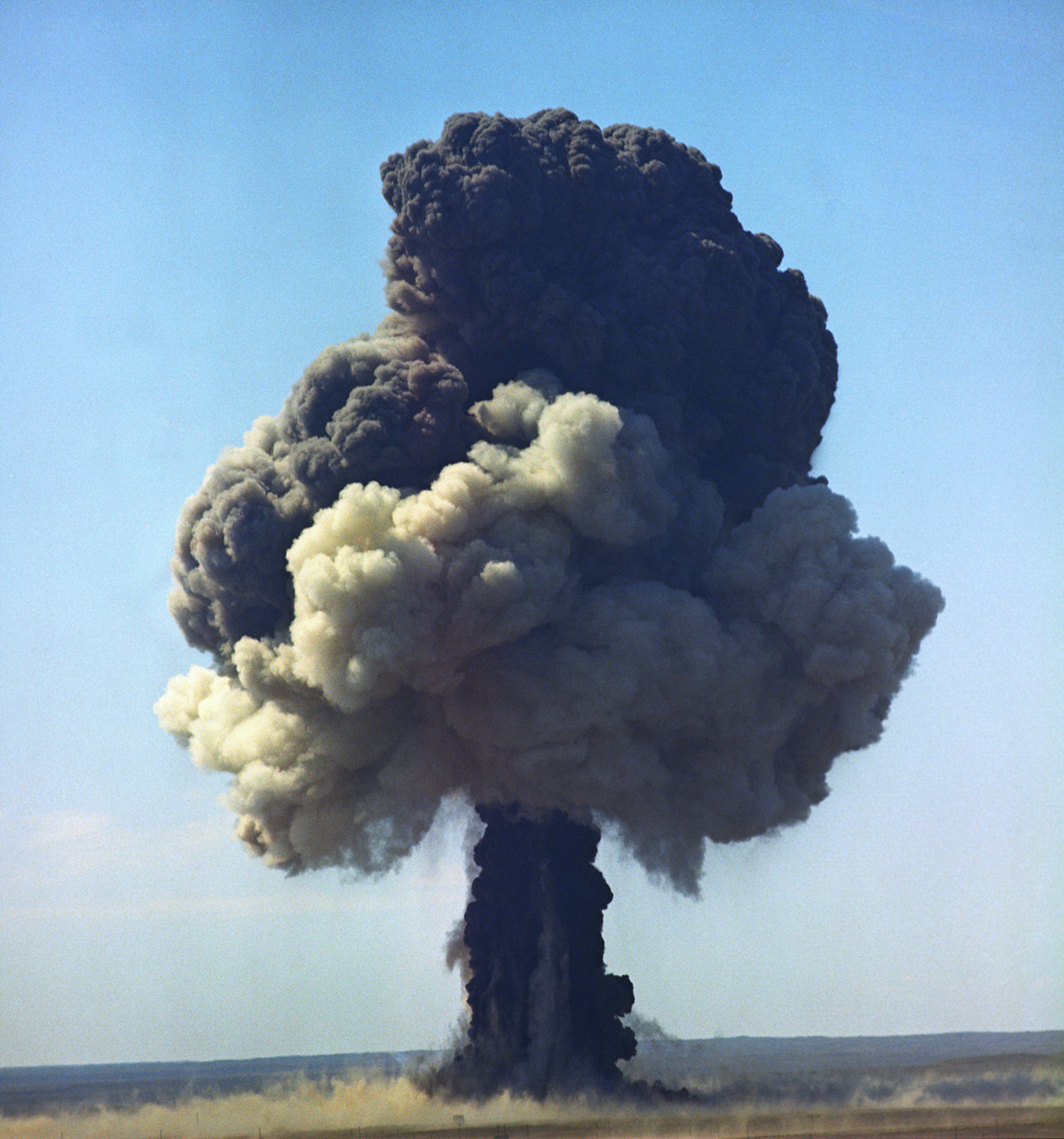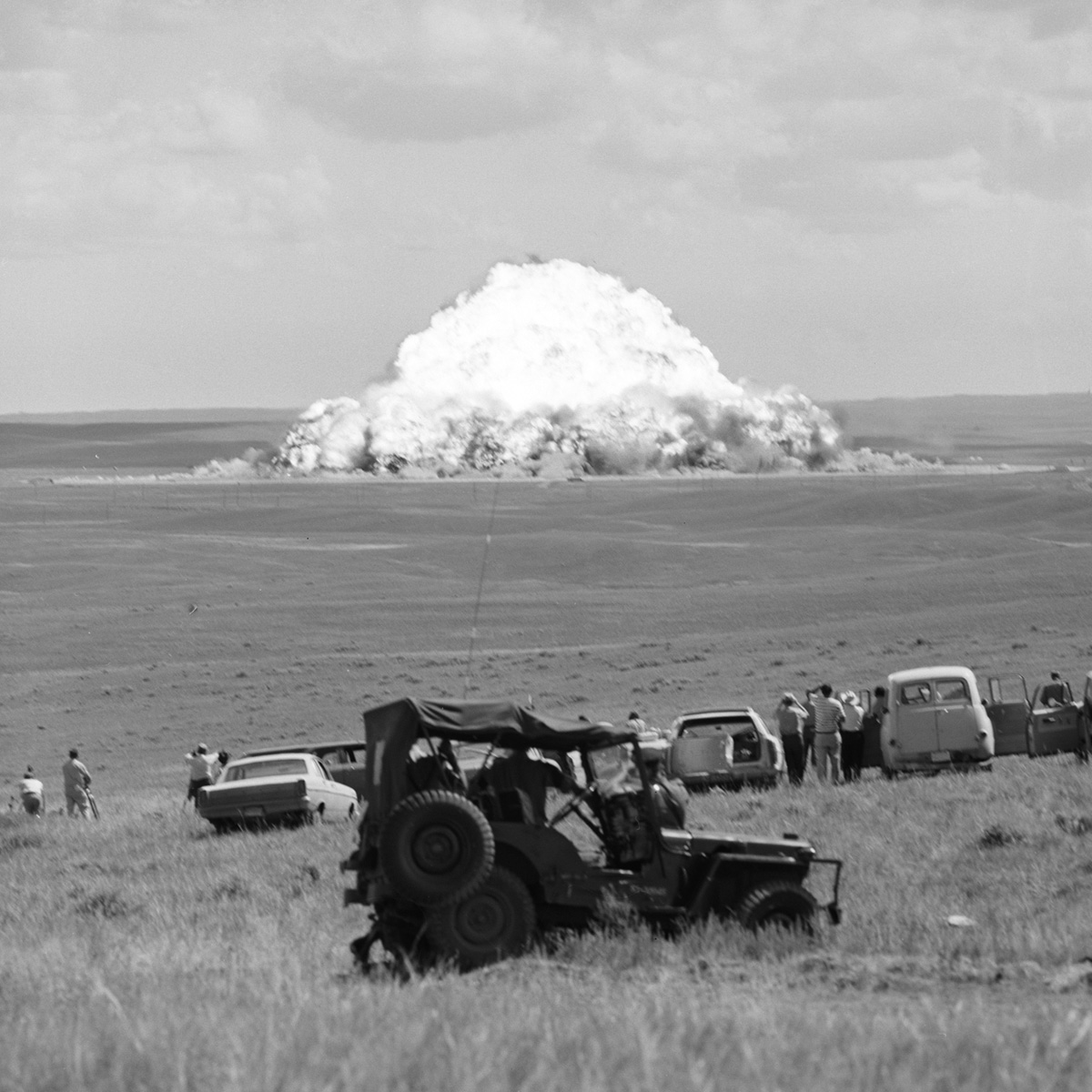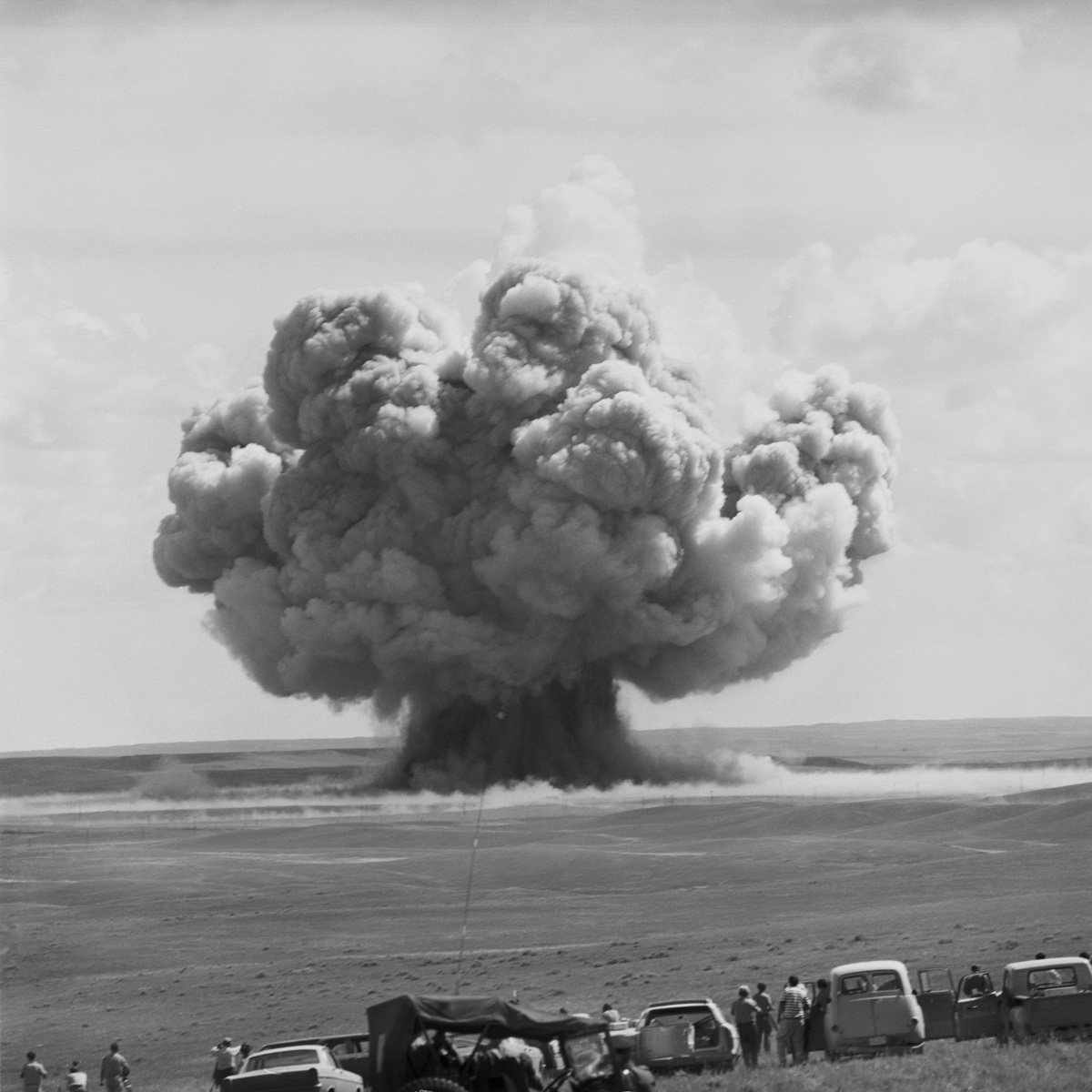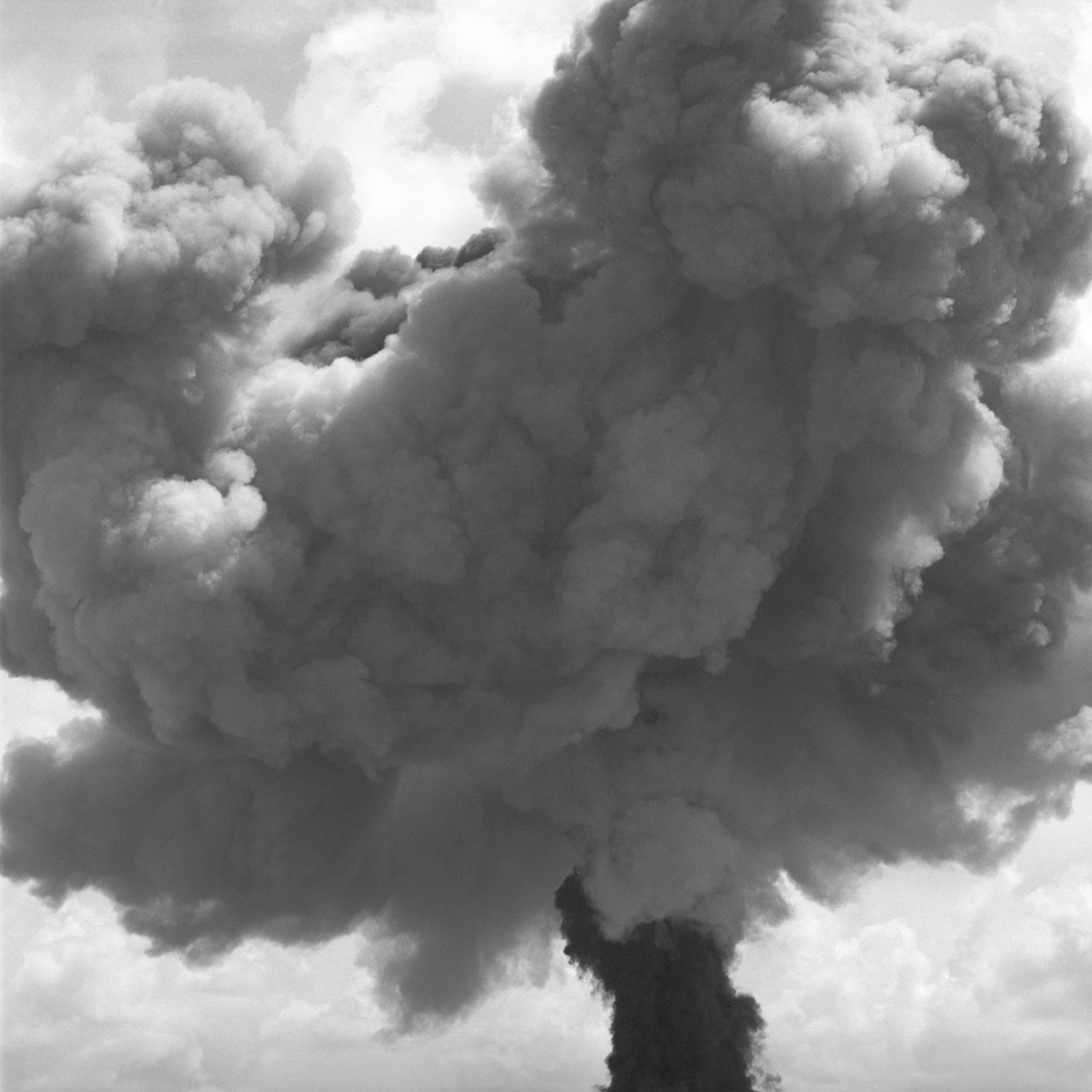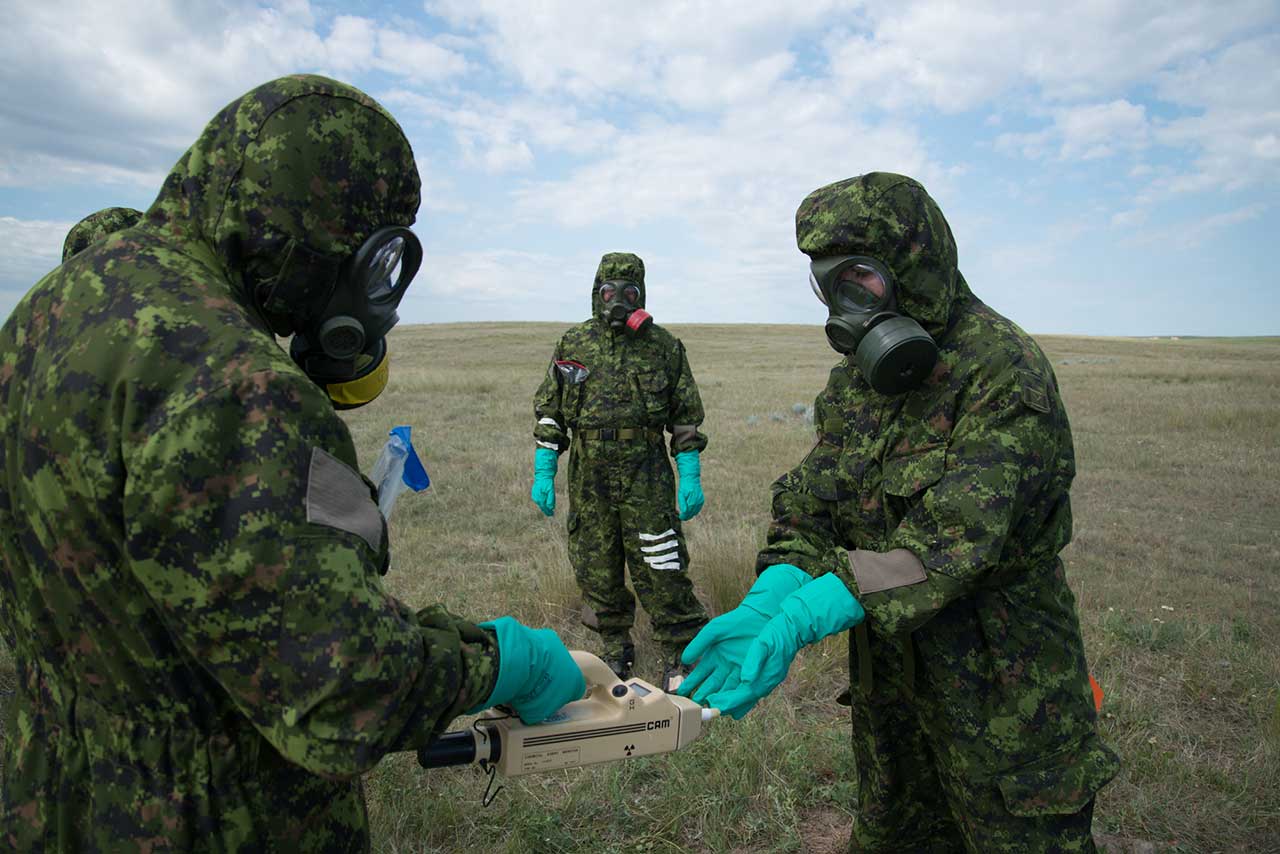DRDC’s experimental proving ground supports CAF, allied readiness
From Defence Research and Development Canada
March 10, 2015
Decontaminating a radiological source, responding to a natural disaster or deploying to the site of a suspected terrorist attack – these are just some of the activities that the Canadian Armed Forces (CAF) have to be prepared for.
With all the new threats that exist in our world today, how can we make sure that our military members are prepared and protected when entering dangerous situations? Readiness can be achieved through training but how can we successfully train the CAF to respond to the wide range of constantly changing and emerging threats? Since 1941, Defence Research and Development Canada has used a unique research, testing and training facility in Alberta to ensure that military personnel have the necessary tools to respond to threats with the right mix of supporting equipment/technology and the intelligence needed to complete successful operations.
Experimental Proving Ground Defined
Keeping a close watch on the ever-changing threat landscape, DRDC provides science and technology expertise to the CAF to aid them in carrying out the defence mission. The Experimental Proving Ground (EPG), a piece of land over 470 square kilometres located at Canadian Forces Base (CFB) Suffield, is the largest of its kind in Canada and the United Kingdom. The EPG gives defence scientists at DRDC – Suffield Research Centre a place to conduct the type of science and technology work that can’t be carried out in a laboratory setting. Size isn’t all that matters though. The EPG is also unique for its relative isolation, mostly clear skies, a moderate climate, lack of trees and a rolling prairie that create unobstructed views.
This unique piece of land helps DRDC to provide realistic training experiences for the CAF and other public security groups, increasing their confidence by allowing them to detect real threats using small amounts of chemical, radiological, nuclear or explosive sources. Large scale blast and weapons trials are conducted to learn more about the latest threats and newest weapons, and protective equipment/technology is developed and tested under a variety of rigorous scenarios. In partnership with industry, development and testing of unmanned and autonomous systems is also conducted on the EPG with many of the systems in use today tracing their beginnings to Suffield.
The EPG as a National Asset
Few other nations have a capability like the EPG. In fact, many of our allied nations have entered into collaborative agreements with the Department of National Defence (DND) to conduct military and defence trials on the EPG. Some of the largest players in the defence industry have also used the EPG to test new technology. By providing the land, safety advice and insight into the needs of the CAF, DRDC often benefits from the results of trials conducted by other nations or industry leaders without having to bear the sole cost, planning and execution of the trial.
“The EPG gives us and our partners a place to perform experiments using dangerous materials and to ultimately develop scenarios that are very realistic,” said Gary Geling, DRDC – Suffield Research Centre Director. “This realism is responsible for not only improving confidence in our test results but also for improving the readiness of the Canadian Armed Forces and public security groups when responding or deploying.”
The EPG Then and Now
In 1941, the Canadian and British governments jointly procured 2,700 square kilometres of land to develop the Suffield Experimental Station (SES) – a chemical and biological weapons test facility. During the Second World War the SES was an invaluable resource to the Allied forces, serving as testing grounds for the development of countermeasures against threat agents feared at the time. For the next 30 years, DRDC used this area to conduct a range of military testing initiatives. In 1971 the Canadian and British governments again came to a partnership agreement regarding the use of the land, establishing CFB Suffield and designating a large portion of the Suffield Block as the Military Training Area for British Army Training Unit Suffield (BATUS). The remaining land, roughly 470 square kilometres, was permanently set aside for defence research and development and referred to as the Experimental Proving Ground.
Operations Overview
To date, the EPG has been the exclusive testing grounds for thousands of trials and training scenarios supporting CAF operations. Notable activities conducted on the EPG both past and present are highlighted below.
- Two of the largest explosives trials conducted on the EPG were carried out in partnership with a number of allied countries in the 1960s. Operation Snowball and Operation Prairie Flat were both undertaken to provide technical information relatable to the detonation of nuclear weapons by creating an explosion using 500 tonnes of TNT. Blast trials that are representative of today’s threats are still conducted on the EPG but often on a much smaller scale.
- Evaluations of different weapons systems like the CRV-7 rockets, TOW missiles and various gun systems are conducted for the CAF on the EPG.
- Because of the ability to use live agents, the EPG is the official training grounds for two annual exercises focused on CBRNE detection (chemical, biological, radiological, nuclear and explosive): Exercise Precise Response and Exercise Firedrake. These exercises help with threat detection and identification training of CBRNE specialists.
- The Canadian Army recently tested the Excalibur “smart” artillery round on the EPG.
- Working with industry partners for the past 30 years, a variety of unmanned and autonomous systems have been developed and tested on the EPG in support of CAF operations in the areas of CBRNE reconnaissance, surveillance and target practice.
Captain Eric Bouchard, commander of the 2014 participating team at EXERCISE PRECISE RESPONSE, noted that "The services offered by DRDC Suffield for CBRN defence training (including the Experimental Proving Ground) are essential not only for the development of the capacity for the CAF but also for other Canadian security agencies and NATO countries. In a context where the CAF are trying to put in place a credible and operational CBRN capacity, the facilities and training offered by DRDC are not a luxury but a necessity.”
